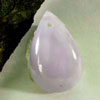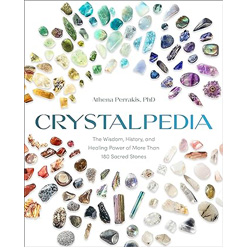- Jewelry
- Inspiration
- Our imagination
- Birthstones
- Celebrating with Eternal Flowers
- Druids and druidesses
- Flower meanings
- History, archeology jewelry
- History and healing properties of metals
- History and healing properties of stone
- Illumination jewelry
- Japanese symbols
- Maya calendar jewelry
- Stone color symbolism
- Stones catalogue
- Wedding anniversaries
- Searches a theme on the site
- Good Deals
- Paintings
- About
- Contact
JEWELRY
- Anklet
- Bracelets
- Brooches
- Cufflinks
- Earrings
- Pendants & Necklaces
- Rings
- Draw your jewelry
- How to clean your jewel
- Metal we used
INSPIRATION
- Our imagination
- Birthstones
- Celebrating with Eternal Flowers
- Druids and druidesses
- Flower meanings
- History, archeology jewelry
- History and healing properties of metals
- History and healing properties stones
- Illumination jewelry
- Japanese symbols
- Maya calendar jewelry
- Stone color symbolism
- Stones Catalogue
- Wedding anniversaries
- Searches a theme on the site
Chalcedony: history, healing properties and lithotherapy
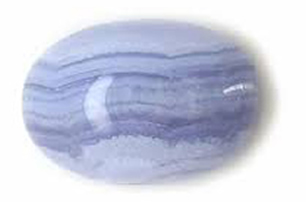
Chalcedony characteristics
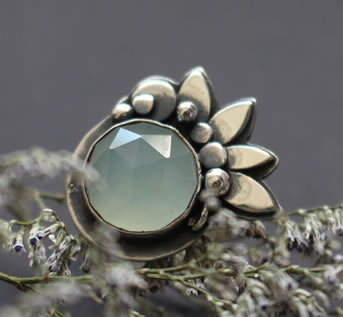
The name of the Chalcedony stone, derived from the Greco-Byzantine city of "Chalcedon," evokes its rich historical heritage, serving as a point of convergence between the ancient worlds of the East and the West.
Also known by the names Chalcedonite or Merlinite, chalcedony stands out due to its unique structure. Although it shares the chemical formula of quartz (SiO₂), it is characterized by the absence of well-formed crystals, with its tiny crystals densely aggregated in an amorphous form. This microcrystalline nature makes it a compact and often translucent stone.
The term chalcedony encompasses a variety of semi-precious stones sharing the silica mix: quartz-moganite, where moganite, a lesser-known form of silica, contributes to its particular structure and color variations. While often associated with the milky white-grey or light blue variety, chalcedony actually includes many other stones, such as onyx, heliotrope, carnelian, and chrysoprase. Each of these stones offers a wide range of hues, from green and golden tones to deep reds and intense blacks, each with unique properties that make them particularly valued in jewelry and lithotherapy.
In terms of physical properties, chalcedony is a relatively soft stone with a hardness of 6.5 to 7 on the Mohs scale, which makes it easy to carve but also more prone to scratches compared to harder stones like sapphire or diamond. Optically, it often exhibits a soft translucency and a waxy luster, enhancing its soothing and dreamlike appearance.
History, beliefs and legends about the chalcedony
Chalcedony tools, crafted as early as the Neolithic period near the town of Quimperlé in France, reveal an ancient and valuable usage. This stone, widely accessible in certain regions, played a crucial role not only in the creation of sharp tools and weapons but also in the crafting of jewelry and amulets. The presence of chalcedony in various archaeological contexts attests to its importance in the religious and social rituals of early human civilizations.
Dating back to 4000 BCE, the Assyrians and Babylonians made history by using chalcedony for their cylinder seals, not only to protect their official documents but also as a talisman believed to ensure the bearer’s safety. These seals, often adorned with engraved motifs, symbolized power and authority, and their use by the ruling classes highlighted the privileged place chalcedony held in the spiritual beliefs of the time.
The Minoans of the Bronze Age, such as those from the famous palace of Knossos, continued this tradition by creating seals from chalcedony. It is believed that this stone offered reduced adhesion to wax when applying the seal, resulting in clearer impressions. This practical quality underlined its significance in the creation of royal and commercial documents.
In Celtic mythology, chalcedony is associated with the goddess of the Clyde River, Clota. It symbolizes nurturing waters and purification, reinforcing its connection to beliefs of regeneration and rebirth tied to springs and rivers in Celtic cultures.
In ancient Greek tradition, it was considered the stone of the goddess Gaia, symbolizing a connection to Mother Earth. Used as a talisman to promote fertility and protect crops, it played a key role in rituals of gratitude towards the earth. This link to Gaia endowed chalcedony with a sacred dimension as a protective stone, associated with prosperity and vitality.
Among the Romans, chalcedony was renowned for promoting eloquence and speech. The anecdote that the orator Cicero wore a chalcedony around his neck reinforces this belief in its stimulating powers. This stone was also used by lawyers and diplomats to attract mental clarity and fluid expression during public speeches.
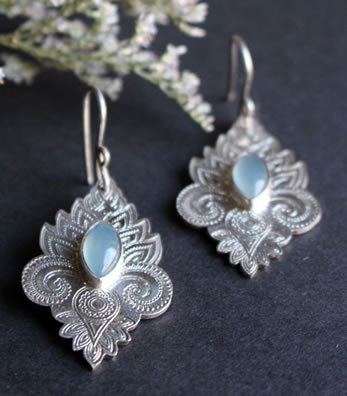
Chalcedony holds significant spiritual importance for many Native American tribes, symbolizing inner peace and frequently used to calm restless spirits.
Among the Lakota Sioux tribes, it is regarded as the stone of Whope, the goddess of peace, embodying harmony and kindness. However, it is interesting to note that other traditions attribute the sacred stone status to turquoise instead.
For these tribes, chalcedony represents a deep connection to inner tranquility and collective serenity. Used ritually and worn as a symbol of peace, this stone provides a precious spiritual link, reflecting the cultural and symbolic richness it brings to Native American traditions. It was also employed in healing rituals, where the soothing energy of chalcedony helped balance the mind and harmonize communal relationships.
Mines: Brazil, India, Madagascar, Italy, Switzerland, Mexico and Russia.
Healing properties and benefits of the chalcedony
Throughout human history, man has attributed various healing properties, virtues, and beliefs to chalcedony. The information presented here is shared for cultural and historical purposes, to illustrate the symbolic relationship between this stone and man throughout time and civilizations. It does not constitute a therapeutic or medical recommendation.
- Chalcedony emerges as a profound symbol of maternal love, carrying a soft and nurturing energy that resonates with the tenderness of motherhood. In lithotherapy, it is used to strengthen the bond between mother and child, providing emotional support during pregnancy and breastfeeding. It also fosters an environment of serenity and protection.
- Known as the stone of singers, chalcedony is celebrated for amplifying the voice and promoting vocal expression, creating a harmony between the stone and the act of singing. By strengthening the throat, it helps release blockages and encourages fluid communication, making it ideal for those who rely on their voice, such as singers, speakers, and teachers.
- Traditionally used for throat infections, chalcedony offers soothing properties, helping to relieve ailments related to this delicate area. Its anti-inflammatory and calming virtues make it a valuable ally for respiratory conditions, such as sore throats and persistent coughs.
- In addition to its benefits for the throat, chalcedony is renowned for soothing chilblains, providing welcome relief from skin discomforts. It also acts on inflammation and promotes the healing of superficial wounds, helping to restore balance to the skin.
- Chalcedony is associated with a range of therapeutic properties, from stomach infections to epileptic seizures and mental disorders, offering broad support for overall health. Its calming effect on the nervous system helps reduce stress and anxiety, and it is often used to calm restless minds, combat insomnia, and balance emotions.
- Chalcedony is reputed to relieve kidney problems, including gallstones, providing relief from conditions related to these vital organs. By promoting the elimination of toxins, it helps purify the body while strengthening the immune system.
- Its calming properties extend to fevers, with chalcedony being known to help lower body temperature. It also contributes to improved blood circulation, aiding in the reduction of inflammatory symptoms within the body.
- Valuable for breastfeeding mothers, chalcedony is believed to stimulate milk production, offering natural support during lactation. In addition to enhancing lactation, it helps ease emotional tensions related to motherhood.
- Chalcedony also appears to play a role in alleviating plant allergies, such as hay fever, while helping to reduce swelling and symptoms of glaucoma. By improving the circulation of bodily fluids, it aids in toxin drainage and reduces puffiness.
 Please note that all healing properties attributed to stones come from ancient traditions and various cultural sources. This information is provided for informational purposes only and does not constitute medical advice. In case of any health concerns, it is recommended to consult a qualified professional.
Please note that all healing properties attributed to stones come from ancient traditions and various cultural sources. This information is provided for informational purposes only and does not constitute medical advice. In case of any health concerns, it is recommended to consult a qualified professional.
Chalcedony jewelry samples
To learn more about litotherapy, we recommend you the following books:










